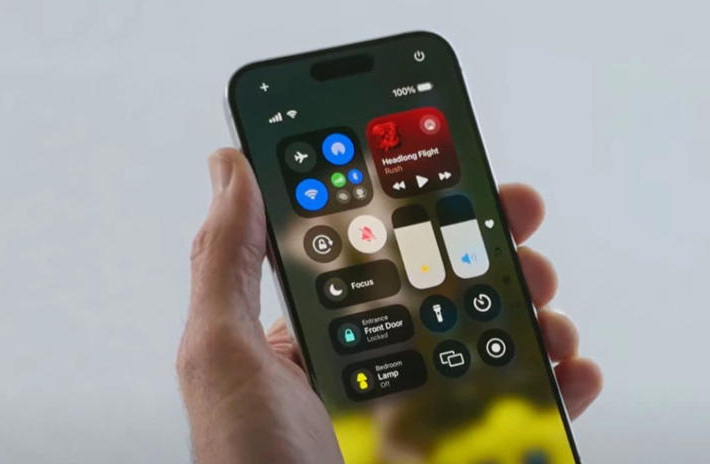Apple has long been praised for its focus on user privacy and data security, but for years, one feature that iPhone users have been clamoring for was missing: native call recording. While some Android devices have supported this feature for a long time, Apple has taken a more cautious approach due to legal concerns surrounding call recording in different regions. With the release of iOS 18, Apple has finally introduced native call recording support for iPhone users. Here’s how it works, what you need to know, and how to use it.
Why Apple Finally Added Call Recording in iOS 18
Apple’s reluctance to introduce call recording stemmed from the complex legal landscape. In many countries, call recording laws differ greatly, with some requiring both parties’ consent and others allowing for one-party consent. To comply with global legal standards, Apple needed to implement a solution that balanced user demand with legal compliance.
iOS 18 brings a built-in call recording feature that is fully integrated into the system while adhering to the privacy standards Apple is known for. It offers clear notifications to both parties when a call is being recorded, ensuring transparency and compliance with laws in various regions.
How Call Recording Works in iOS 18
The call recording feature in iOS 18 is designed to be simple and intuitive for users. Below is a step-by-step guide on how to use the call recording feature on your iPhone running iOS 18.
Step-by-Step Guide to Recording Calls
- Update to iOS 18:
- First, ensure that your iPhone is updated to iOS 18. You can check for updates by going to Settings > General > Software Update and installing any available updates.
- Enable Call Recording:
- Go to Settings > Privacy & Security > Call Recording.
- Toggle the switch to turn on Call Recording. You may need to accept a disclaimer stating that call recording is subject to local laws and regulations.
- Start Recording During a Call:
- Once enabled, you can record a call by simply pressing the Record button during the call interface.
- Both incoming and outgoing calls can be recorded.
- A small Recording Icon will appear on the call screen, indicating that the call is being recorded.
- Notification to Other Parties:
- iOS 18 sends an automatic voice prompt at the start of the recording to inform the other party that the call is being recorded. This ensures compliance with two-party consent laws in some regions.
- Save and Access Recordings:
- After the call ends, the recording will be saved to your Voice Memos app by default. You can access, rename, edit, or share your recordings directly from the app.
- Managing Recordings:
- You can manage your call recordings by going to Settings > Privacy & Security > Call Recording > Manage Recordings. Here, you can delete, archive, or share recordings with ease.
Regions Where Call Recording is Available
Due to varying legal requirements, Apple’s call recording feature in iOS 18 is not available in all regions. Here are a few important points to consider:
- Availability: The feature is enabled in regions where call recording laws are more permissive, such as the U.S. (in states with one-party consent laws) and several European countries.
- Restrictions: In countries with strict two-party consent laws, such as Germany and some U.S. states, the feature will only work if the other party explicitly consents to the recording. Apple enforces this with mandatory notifications.
Users in regions where call recording is heavily restricted may not have access to this feature, and Apple advises users to be aware of their local laws before using the call recording functionality.
Privacy and Security Features
Apple’s approach to call recording in iOS 18 places a strong emphasis on user privacy. Here are some of the ways Apple ensures the feature aligns with its privacy standards:
- End-to-End Encryption: Like many of Apple’s services, call recordings are encrypted and stored securely on the device. Recordings are not uploaded to iCloud by default, though users have the option to enable backup if they choose.
- Consent Notifications: The voice prompt notifying the other party about the recording is mandatory and cannot be disabled. This ensures that Apple remains compliant with regional laws while protecting the privacy of individuals on both sides of the call.
- Manual Deletion: Users can manually delete call recordings at any time, and Apple does not keep copies of the recordings on its servers unless iCloud is enabled.
Use Cases for Call Recording
Call recording can be useful for various legitimate purposes, such as:
- Business Meetings: Professionals can use the feature to record important phone calls, such as client meetings or conference calls, for later reference or documentation.
- Interviews: Journalists and researchers often need to record interviews for accuracy. The iPhone’s built-in recording feature makes this task much more straightforward.
- Customer Support: Users can record customer support calls to keep a record of promises made by companies or to refer back to troubleshooting steps.
- Legal and Contractual Agreements: In some cases, individuals might need to record conversations that involve legal agreements or contracts for future reference. Always check local laws to ensure compliance.
Limitations and Legal Considerations
While the call recording feature in iOS 18 is a welcome addition, users should be aware of its limitations and legal implications:
- Automatic Consent Notification: iOS 18’s call recording feature automatically notifies all parties involved in the call, which could be a disadvantage in regions where one-party consent is legal.
- Jurisdictional Issues: Laws regarding call recording vary significantly between regions, and Apple’s global user base may find that the feature is restricted or unavailable in certain areas. It is crucial to understand your local laws before using the feature.
- Storage Limitations: Large call recordings can take up significant space on your device. Users should manage their storage carefully, especially if they make long or frequent recordings.
How This Affects Third-Party Call Recording Apps
Before iOS 18, iPhone users relied on third-party apps to record calls. However, these apps often required workarounds, such as using conference calls to record conversations. With the introduction of native call recording, the need for third-party apps may diminish. However, third-party apps may still offer additional features that Apple’s built-in solution lacks, such as cloud storage, advanced editing, or transcription services.
Conclusion
With iOS 18, Apple has finally introduced a feature many iPhone users have been eagerly awaiting: native call recording. The feature is built with privacy and security in mind, ensuring that users comply with regional laws while making it easy to record, save, and manage calls. While there are some limitations, the native solution is a significant improvement over previous third-party options. Whether for personal use, business, or legal purposes, iOS 18’s call recording feature makes recording phone conversations easier than ever for iPhone users.
Have you tried iOS 18’s call recording feature yet? Share your thoughts and experiences in the comments below!







